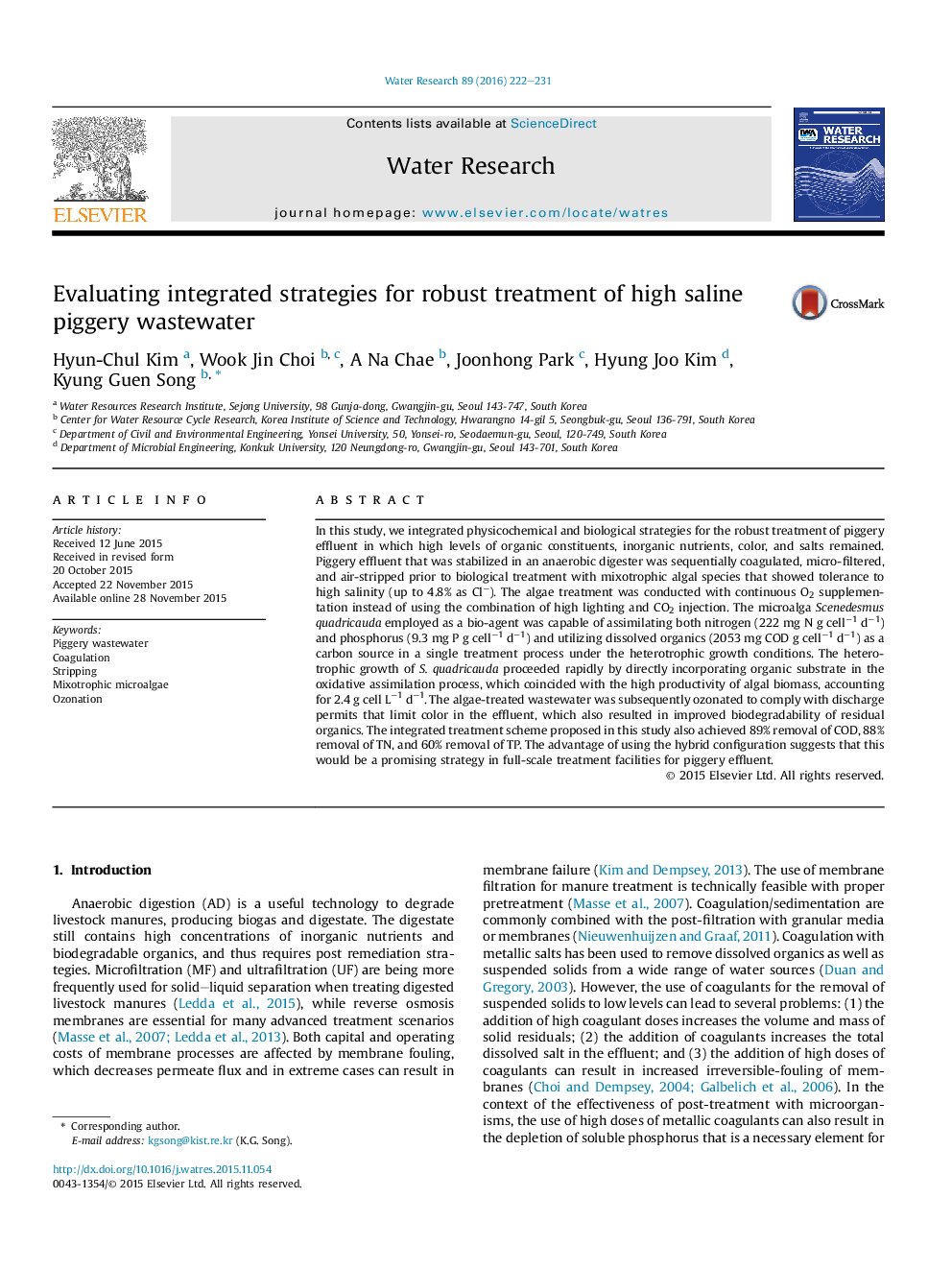| کد مقاله | کد نشریه | سال انتشار | مقاله انگلیسی | نسخه تمام متن |
|---|---|---|---|---|
| 4481034 | 1623079 | 2016 | 10 صفحه PDF | دانلود رایگان |
• A multi-strategic approach was successful in treating refractory piggery wastewater.
• A substantial removal of TSS was achieved over a broad range of coagulant doses.
• The robust bioremediation with Scenedesmus quadricauda was demonstrated at the high salinity.
• The heterotrophic algal growth resulted in the simultaneous removal of TN/TP & TOC.
• A greater reliability for compliance with color goals was achieved by ozonation.
In this study, we integrated physicochemical and biological strategies for the robust treatment of piggery effluent in which high levels of organic constituents, inorganic nutrients, color, and salts remained. Piggery effluent that was stabilized in an anaerobic digester was sequentially coagulated, micro-filtered, and air-stripped prior to biological treatment with mixotrophic algal species that showed tolerance to high salinity (up to 4.8% as Cl−). The algae treatment was conducted with continuous O2 supplementation instead of using the combination of high lighting and CO2 injection. The microalga Scenedesmus quadricauda employed as a bio-agent was capable of assimilating both nitrogen (222 mg N g cell−1 d−1) and phosphorus (9.3 mg P g cell−1 d−1) and utilizing dissolved organics (2053 mg COD g cell−1 d−1) as a carbon source in a single treatment process under the heterotrophic growth conditions. The heterotrophic growth of S. quadricauda proceeded rapidly by directly incorporating organic substrate in the oxidative assimilation process, which coincided with the high productivity of algal biomass, accounting for 2.4 g cell L−1 d−1. The algae-treated wastewater was subsequently ozonated to comply with discharge permits that limit color in the effluent, which also resulted in improved biodegradability of residual organics. The integrated treatment scheme proposed in this study also achieved 89% removal of COD, 88% removal of TN, and 60% removal of TP. The advantage of using the hybrid configuration suggests that this would be a promising strategy in full-scale treatment facilities for piggery effluent.
Figure optionsDownload high-quality image (255 K)Download as PowerPoint slide
Journal: Water Research - Volume 89, 1 February 2016, Pages 222–231
